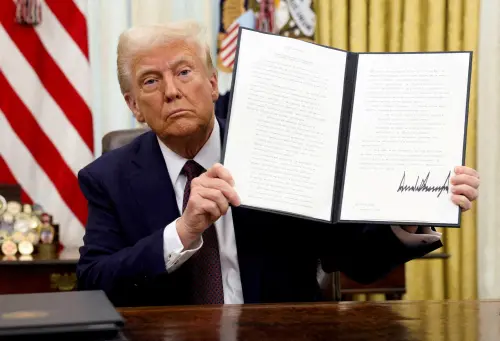The recent India-Pakistan crisis is just the latest chapter in a long-running debate about the consequences of nuclear weapons, writes Caitlin Talmadge. This piece originally appeared in the Washington Post.
The world has been on edge watching India and Pakistan’s latest crisis. For the first time since 1971, India bombed mainland Pakistan. The strike was retaliation after a Pakistan-based terrorist group supported a suicide bombing in the disputed territory of Kashmir that killed at least 40 Indian paramilitary soldiers.
Unlike in 1971, however, India and Pakistan now have sizable nuclear arsenals. Before Pakistan released a captured Indian pilot who had ejected over its territory, some observers worried that the crisis could have escalated into a nuclear conflict. Others, however, would likely credit nuclear weapons with getting both countries to step back from the brink.
Which is it? The crisis is just the latest chapter in a long-running debate about the consequences of nuclear weapons.
Scholars disagree about whether nuclear weapons stabilize or destabilize relations between adversaries.
The traditional school of thought is that once two countries establish secure nuclear arsenals that can withstand attack and still hit back, they enter a state of mutually assured destruction, or MAD. Even the loser in a war can devastate the other’s civilians, making military victory and relative military power all but meaningless.
The result, according to this logic, is that nuclear-armed adversaries will behave quite differently from countries without nuclear weapons. Afraid of nuclear escalation, such rivals will avoid arms races, stay out of wars, deescalate crises, refrain from threatening one another’s core interests, and generally maintain the status quo.
Not all scholars agree with this analysis. Precisely because countries with robust nuclear arsenals can threaten one another with such devastation, they may believe they can safely skirmish at a lower level without fearing all-out war. Glenn Snyder called this the Stability-Instability Paradox.
A country with a secure nuclear arsenal might even increase its low-level military provocations of a nuclear-armed opponent, betting that the opponent’s fear of escalation will constrain the response. From this perspective, nuclear weapons can make conflict more likely and—if countries miscalculate escalation risks—more dangerous.
The historical record from the Cold War is mixed.
Many credit nuclear weapons with keeping the Cold War cold. But the United States and the Soviet Union did have several near-misses—most notably the crises over Berlin from 1958-1961, and Cuba in 1962. The two superpowers also fought bloody proxy wars in places as varied as Korea, Vietnam, Afghanistan and the Middle East.
U.S. and Soviet policymakers profoundly feared nuclear escalation, worried that any conflict could get out of control and devastate both nations. But both sides also tried, at times, to exploit these fears to gain bargaining advantages on issues they really cared about, hoping that the other side might back down.
At other times, the U.S. and U.S.S.R. believed that they could safely skirmish through proxies without risking nuclear catastrophe. Usually they were right, although sometimes, such as in the 1973 Arab-Israeli war, conventional conflict came closer to the nuclear threshold than expected.
Further, both the U.S. and U.S.S.R. sought various ways to escape from MAD’s limitations. Both pursued military capabilities that could threaten the other’s nuclear forces (not just its cities) and could shield their homelands.
As political scientists Austin Long and Brendan Green have shown, the U.S. did this more successfully. But it still never felt confident that it could strike the Soviets without risking devastating retaliation.
The U.S. capabilities alarmed the Soviets, however, who believed the U.S. was preparing for attack. This fear could have made crises or wars much more dangerous.
Nuclear weapons have a similarly double-edged effect in the India-Pakistan relationship today.
India and Pakistan fought three conventional wars—in 1947, 1965, and 1971—before acquiring nuclear weapons. Though they’ve fought one war and had several crises since 1998, all have been smaller in scale. This is probably not a coincidence, as political scientists Devin Hagerty and Sumit Ganguly have argued.
Nevertheless, the recent crisis shows that even if both sides have robust nuclear arsenals, governments don’t necessarily maintain the status quo—especially when there are poorly controlled militants operating in a border area that both sides consider vital.
Just as in the Cold War, India and Pakistan may try to use the risk of escalation to get the upper hand, hoping the other side will back down. So while it’s true that the fear of nuclear escalation may reduce wars and crises, nuclear weapons also could make such events more dangerous if they happen.
Like the superpowers, India and Pakistan may also believe that they can sometimes operate safely below a conventional-nuclear firebreak. But if they disagree on where that threshold lies, all bets are off, as Paul Kapur has emphasized.
This sort of thinking is especially worrisome given that India, like the Cold War U.S., may be trying to escape MAD. According to political scientists Christopher Clary and Vipin Narang, India is considering developing forces that could attack Pakistan’s nuclear weapons preemptively.
If India believes it has this capability, it might try to strike first if it believed Pakistan were poised to use nuclear weapons. But if Pakistan believed India believed that, then of course Pakistan really would have incentives to go first.
This is the stuff of nuclear nightmares, especially with the U.S. government sitting on the sidelines. Worse, unlike the U.S. and U.S.S.R., India and Pakistan share a border—and their citizens may be pushing harder for escalation.
The Brookings Institution is committed to quality, independence, and impact.
We are supported by a diverse array of funders. In line with our values and policies, each Brookings publication represents the sole views of its author(s).








Commentary
Are nuclear weapons keeping the India-Pakistan crisis from escalating—or making it more dangerous?
March 8, 2019